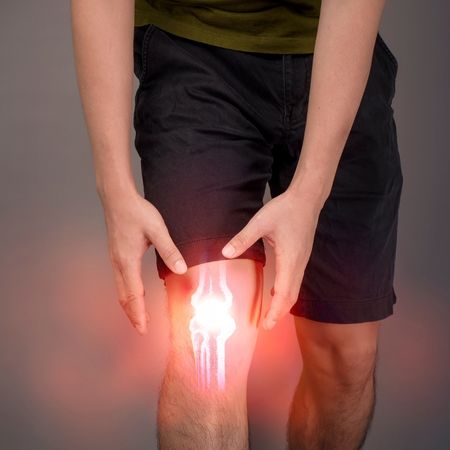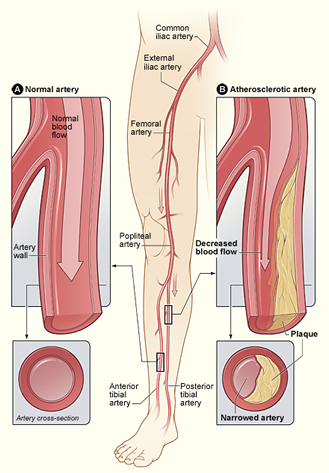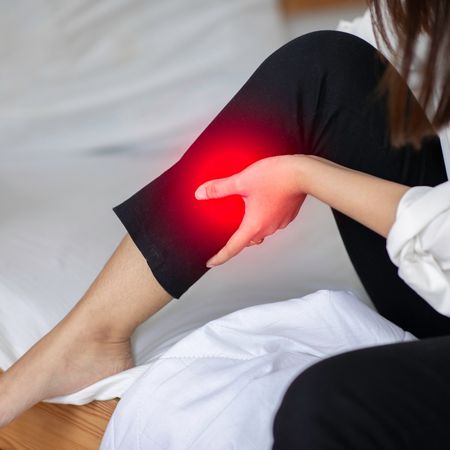Ischemic Leg Pain in Chicago
Home » Ischemic Leg Pain
Ischemic Leg Pain: Peripheral Arterial Disease Treatment
Poor diet and a lack of exercise can lead to numerous health problems—even if you aren’t technically overweight. Peripheral arterial disease (PAD) is commonly seen in people of all shapes and sizes; it’s characterized by plaque build-up in the arteries.
Made from fat, cholesterol, calcium, fibrous tissues, and other blood substances, plaque can cause serious problems. When it builds up too much, it causes atherosclerosis. With time, the arteries harden and narrow, restricting blood flow and damaging the organs.
This can cause many different symptoms, but one of the most common is chronic leg pain, also known as ischemic leg pain.

PAD and Ischemic Leg Pain overview
Proper blood flow is essential to the health of all parts of the body. It carries vital nutrients, as well as oxygen. When blood flow is limited, health declines, and in severe cases, parts of the body can begin dying.
When blood flow to the legs is inhibited, it generally causes pain, numbness, and a pins and needles sensation. It also increases the risk of the legs becoming infected while simultaneously making it harder for the body to fight that infection. If tissue death occurs, PAD could result in amputation.

Identifying Ischemic Leg Pain
Many people ignore the initial signs of ischemic leg pain, assuming it is just a symptom of getting older. While this is possible, it could also indicate you have PAD. If you are noticing pain in your legs when walking or climbing stairs, speak with a peripheral artery disease doctor.
Other signs of ischemic leg pain to look out for include:
- Black, dry skin on the legs and feet
- Numbness or pain in the legs and feet
- Severe leg pain
- Skin on the feet and legs that is smooth, shiny, and dry
- Sores or infections that don’t heal with time
- Thick toenails
- Weak pulse in the legs or feet
Risks for Developing PAD
Technically, anyone can develop peripheral artery disease, but those with certain habits or from specific populations are at greater likelihood of getting PAD. Some of the top risk factors that lead to a peripheral artery disease diagnosis include:
- Smoking
- High blood pressure
- Atherosclerosis
- Diabetes
- High cholesterol
- Being over 50
- Eating a poor diet
- Not exercising properly
- Being overweight or obese

PAD and Ischemic Leg Pain Treatment
In general, PAD and ischemic leg pain cannot be reversed. However, the right approach can stop deterioration, and pain management can make the leg pain less debilitating. The key is to get help early on, as this can prevent the worst side effects from occurring. The goal is to live a long and happy life; early intervention helps avoid limb death and amputation.




